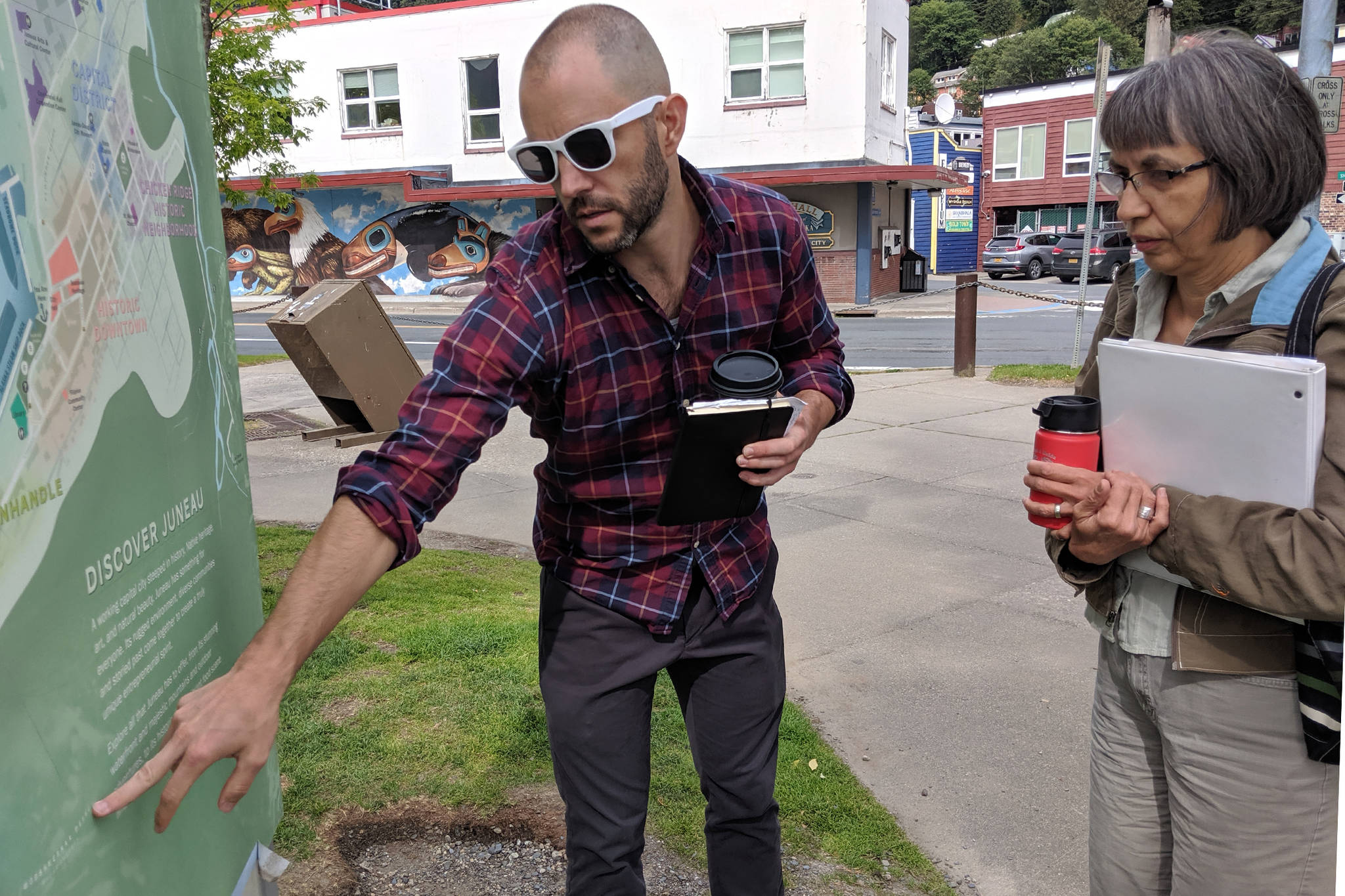Signs directing people around Juneau will tell stories about the capital city in the words and voices of locals.
The City and Borough of Juneau’s wayfinding signage system, which is expected to debut in spring or summer of 2020, will include audio elements that will allow people to hear stories about Juneau from multiple perspectives.
Ten of 40 signs will feature scannable QR codes — the omnipresent Rorschach-like patches often seen on placards and event tickets — that will link to two-to five-minute recordings of stories about Juneau. The recordings will also be listenable at the Juneau-Douglas City Museum and through Juneau Public Libraries.
[One student intern put together a night of song and dance celebrating diversity in Juneau]
Exactly what those stories will be is still being worked out and might not be totally clear until early next year.
“It’s an exciting possibility that each audio piece will be really, really anchored into each corner where that piece is,” said Ryan Conarro, Juneau artist, member of New York-based Ping + Chong Company and co-artistic collaborator and facilitator for the Juneau Voices Audio Wayfinding Project.
He said depending on the stories that are shared it’s also possible the stories won’t be directly related to specific locations but will have a broader connections to Juneau.
“Either way, yes these are audio pieces that are about place,” Conarro said.
City and Borough of Juneau contracted Ping + Chong Company to create the audio installations. That portion of the project is supported by $25,000 from the Rasmuson Foundation and $10,000 from the Alaska Humanities Forum, according to a CBJ Engineering & Public Works Department memo.
Matching funds from the city came in the form of $15,000 from the Downtown Streets Project and $5,000 from the Downtown Wayfinding project.
Conarro and co-artistic collaborator and facilitator Lillian Petershoare said Goldbelt Heritage Foundation had also pledged money to the effort but would not say how much.
The larger Downtown Juneau Wayfinding and Interpretive Elements Project will be paid for using Marine Passenger Fee money, said CBJ Project Manager Lisa EaganLagerquist in an email. She did not say how much the project is estimated to cost.
EaganLagerquist said there will be four different sign types ranging in size and design, and they are currently being designed.
Petershoare said she and Conarro will be casting a wide net when searching for storytellers and there are no specific genders, ages, creeds or cultures that could not potentially share a story.
“We want it to be very inclusive,” Petershoare said.
[Need space for your burlesque act or spoken word performance? GRLZ has you covered.]
An information session scheduled for 6:30-8 p.m. Tuesday, Aug. 27 at the Downtown Library will be part of searching out stories and raising awareness for the project. There will also be a series of story circles and interviews Sept. 10-20 and over the winter, Conarro and Petershoare will work with local musicians to add another element to the audio installations.
Conarro said one of the reasons they want to the project to include less-heard voices is because it paints a more nuanced and accurate picture of Juneau’s history and present.
“I’m somebody who moved here as an adult,” Conarro said. “So I think about my own experience of first arriving in Juneau, and what was the prevailing story of this place that I encountered? It was the gold rush history. A goal of this project is, how can we illuminate that there’s so much more to Juneau’s history than the one linear story?”
Have a story you want to tell?
Co-artistic collaborators and facillitators Ryan Conarro and Lillian Petershoare are willing to meet with people and organizations. Conarro can be reached at ryan@pingchong.org or 321-2888. Petershoare can be reached at 957-3167 or lvpetershoare@gmail.com.
• Contact reporter Ben Hohenstatt at (907)523-2243 or bhohenstatt@juneauempire.com. Follow him on Twitter at @BenHohenstatt.

